Beurer BM 55 User Manual
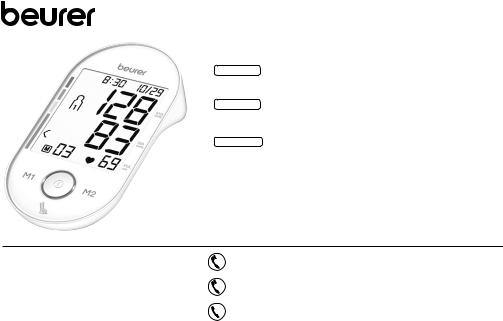
BM 55
ENGLISH
ESPANOL
FRANÇAIS
Blood pressure monitor |
|
Instruction manual.................... |
2 |
Tensiómetro para brazo |
|
Manual de instrucciones........ |
29 |
Tensiomètre |
|
Mode d’emploi........................ |
57 |
Electromagnetic Compatibility |
|
Information................................................. |
85 |
Distributed by/Distribuido por/ Distribué par :
Beurer North America LP
900 N Federal Highway, Suite 300 Hallandale Beach, FL 33009 www.beurer.com
Questions or comments?
 Call toll free 1-800-536-0366 or contact info@beurer.com
Call toll free 1-800-536-0366 or contact info@beurer.com
¿Preguntas o comentarios? Llame gratis al
 1-800-536-0366 o póngase en contacto info@beurer.com
1-800-536-0366 o póngase en contacto info@beurer.com
 Questions ou commentaires? Appeler gratuitement
Questions ou commentaires? Appeler gratuitement  1-800-536-0366 ou communiquez avec info@beurer.com
1-800-536-0366 ou communiquez avec info@beurer.com
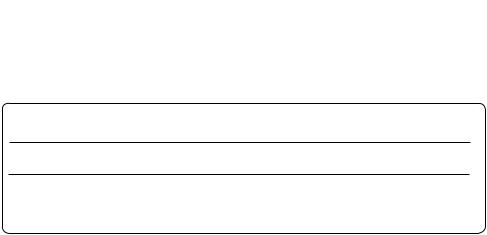
READ THIS MANUAL COMPLETELY AND CAREFULLY BEFORE USING THIS PRODUCT
Keep this manual in a safe location for future reference
LEA TODO ESTE MANUAL CON ATENCIÓN ANTES DE USAR ESTE PRODUCTO
Conserve este manual en un lugar seguro para consultarlo en el futuro
LISEZ CE MODE D’EMPLOI COMPLÈTEMENT ET ATTENTIVEMENT AVANT
D’UTILISER CE PRODUIT
Conservez ce manuel en lieu sûr pour y faire référence ultérieurement
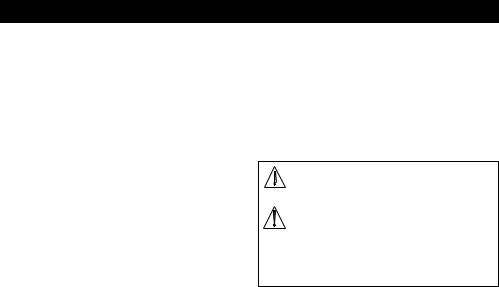
ENGLISH
Contents
IMPORTANT SAFETY NOTES............................................ |
3 |
||
1. |
Getting to know your instrument................................ |
11 |
|
2. |
Important information................................................. |
11 |
|
3. Package Contents........................................................ |
12 |
||
4. |
Device description....................................................... |
12 |
|
5. |
Getting started............................................................. |
13 |
|
|
5.1 |
Inserting/replacing batteries.............................. |
13 |
|
5.2 |
Cuff selection....................................................... |
14 |
|
5.3 |
Setting the date and time.................................... |
14 |
6. |
Measuring blood pressure.......................................... |
15 |
|
|
6.1 |
Positioning cuff.................................................... |
15 |
|
6.2 |
General notes....................................................... |
16 |
|
6.3 Taking measurement........................................... |
17 |
|
|
6.4 |
Displaying and deleting measurements............ |
19 |
7. |
Evaluating results......................................................... |
20 |
|
|
7.1 |
Irregular heartbeat symbol................................. |
20 |
|
7.2 |
World Health Organization (WHO) classification.. |
|
|
21 |
|
|
8. |
Care, maintenance and disposal................................ |
23 |
|
9. |
Error messages/troubleshooting............................... |
23 |
|
10. Technical Specifications........................................... |
24 |
||
11. FCC Compliance Statement..................................... |
25 |
||
12. Warranty...................................................................... |
26 |
||
IMPORTANT SAFETY NOTES
Signs and symbols
Whenever used, the following signs identify safety and property damage messages and designate a level of hazard or seriousness.
READ THIS ENTIRE MANUAL, THE SAFETY SECTION AND ALL INSTRUCTIONS AND WARNINGS COMPLETELY AND CAREFULLY BEFORE USING THIS PRODUCT. FOLLOW ALL SAFETY INSTRUCTIONS AND WARNINGS
WARNING WARNING indicates a hazardous situation which, if not avoided, could
result in death or serious injury.
CAUTION CAUTION indicates a hazardous situation which, if not avoided, may result
in minor or moderate injury.
NOTICE NOTICE addresses practices not related to personal injury, such as product and/or property damage.
3

TO AVOID HAZARDOUS SITUATIONS AND TO MAKE CORRECT USE OF THIS PRODUCT.
 WARNING:
WARNING:
•Consult your physician or pharmacist before starting to measure your blood pressure.
•Read and understand all instructions and warnings before using this device.
•Like any oscillometric blood pressure measurement devices, certain medical conditions can affect the measurement accuracy, among others:
–disorder of the cardiac rhythm
–very low blood pressure
–patients in shock
–patients with very low blood perfusion
–diabetes
–vessel anomalities
–people with electrical implants, such as a cardiac pacemaker
–women who are pregnant.
•Due to their condition the oscillometric measurement method can produce incorrect readings. This represents a risk for your health, since values may be interpreted incorrectly. Always consult your physician to determine what will be suitable for you.
•This product does not and is not intended to provide a medical diagnosis. Measurements results are for refer-
ence only. Self-diagnosis and treatment, e.g. regarding medication, using measured results represent a risk for your health. Always consult with a licensed physician for determination of appropriate medication and dosage thereof. Follow the instructions of your physician or licensed healthcare provider. If you have or suspect that you have a medical problem, promptly consult your physician. If you have an emergency please call 911 immediately.
•Only a physician or a trained health care professional who is familiar with your medical history is able to accurately interpret your blood pressure measurements. Consult your physician before starting blood pressure monitoring.
•This product is not intended to serve as a substitute for the advice of a physician or medical professional. This product is not intended to substitute for regular medical checkups. Contact your physician for specific information about your blood pressure.
•Please note that technically related measuring tolerances are possible. Please see section ‘10. Technical Specifications’ for details. NOTE: A single measurement does not provide an accurate indication of your true blood pressure. You need to take and record several readings over a period of time. Try to measure your blood pressure at the same time each day for consistency.
4
•Any cuff related blood pressure measurement in high repetition rates, can lead to severe measurement side effects, e.g.
–any nerv compression with temporary arm/hand paralysis
–the release of an arterial or venous thrombus, which can cause a life threatening situation.
•Please contact your physician about the specific risks of cuff pressure in your specific case.
•The ’irregular heartbeat’ function does not replace a cardiac examination, but may help to detect potential pulse irregularities at an early stage. Always consult your physician to determine what will be suitable for you.
•The ’irregular heartbeat’ function is not designed for diagnosing or treating an arrhythmic disorder. Arrhythmia can only be ascertained by a licensed physician.
•The WHO chart is not intended to replace a medical diagnosis. This chart is only a reference for different classifications of blood pressure.
•If you notice abnormal or suspicious variations in blood pressure measurements, consult your physician immediately.
•Women who underwent a breast or axillar lymph node removal operation should consult a physician or licensed healthcare provider before starting blood pressure measurements.
•Prior to use, you have to ensure that the blood pressure monitor is free of damage. If in doubt, do not use the unit and contact customer service at 1-800-536-0366.
•This device is intended only for personal, non-commer- cial, adult use in measuring blood pressure and pulse rate. Do not use the product for any other purpose. This product is not intended for use in a hospital, physician’s office, or any other health care facility.
•The unit must be used in accordance to the specified ambient conditions, otherwise the accuracy of readings might be affected. See section ‘8. Care and Maintenance’ and section ‘10. Technical Specifications’ for details.
•Do not wrap the cuff around body parts other than your arm. Misuse represents a risk to your health.
•Please do not share the cuff with other persons, to avoid cross infection.
•Use this monitor only on humans.
•This product is not intended for use by or on children, toddlers and infants or on persons who cannot express their consent, e.g. persons with mental disorders or the like. Consult your physician for alternative methods of measuring a child’s blood pressure.
•This product is not a toy. Keep it out of reach of children, toddlers, and infants.
•Keep the product out of the reach of pets.
•Packaging materials are a deadly hazard for children and can cause suffocation. Remove all packaging ma-
5
terials immediately and keep them away from children at all times.
•This product contains small parts that may present a choking hazard to children. Keep the unit and all parts out of reach of children. NEVER LEAVE CHILDREN OR THOSE WHO REQUIRE CLOSE SUPERVISION UNATTENDED WITH THIS DEVICE.
•The tubing presents a strangulation hazard. Keep this product away from children and those who require close supervision, e.g. people with mental disorders. NEVER LEAVE CHILDREN OR THOSE WHO REQUIRE CLOSE SUPERVISION UNATTENDED WITH THIS DEVICE.
•Do not drape tube around neck. This presents a strangulation hazard.
•People with disabilities, activity limitations, or who are physically frail, should be assisted by another person when using this unit.
•Proper cuff size is important for accurate measurements. Only use the device on adults who have the right upper arm circumference for this instrument. See section ‘10. Technical Specifications’ for suitable upper arm circumferences.
•Do not use any cuffs, tubes, parts and accessories other than those explicitly recommended by the manufacturer for use with this product. Parts and accessories not approved for use with the device may cause damage to your health and to the product.
•Electromagnetic interference: Avoid strong electrical or electromagnetic fields in the direct vicinity of the device (e.g. mobile telephones, microwave ovens) while it is in operation, as inaccurate measurements may result. To prevent such interference, use the unit at a sufficient distance from such devices or turn the devices off.
•The blood pressure monitor must not be used in connection with a high-frequency surgical unit.
•Do not measure your blood pressure while operating a vehicle or in any situation which requires your full attention.
•During the blood pressure measurement, blood circulation must not be stopped for an unnecessarily long time. If the device malfunctions, remove the cuff from the arm.
•Avoid any mechanical restriction, compression or bending of the cuff line.
•Do not allow sustained pressure in the cuff or frequent measurements. The resulting restriction of the blood flow may cause injury.
•Ensure that the cuff is not placed on an arm in which the arteries or veins are undergoing medical treatment, e.g. intravascular access or therapy, or an arteriovenous (AV) shunt.
•Do not use the cuff on people who have undergone a mastectomy.
•It is inappropriate for people with serious arrhythmia to use this Electronic Sphygmomanometer.
6

 CAUTION:
CAUTION:
•The device should not be used when your arm has been wounded/injured or when a catheter has been inserted. Such use may result in injury.
•Remove any kind of arm jewelry or the like before taking a measurement. This could cause bruises.
•Do not place the cuff over heavy clothing (e.g. a jacket or sweater sleeve) as the blood pressure monitor will not be able to take a proper measurement and there is an elevated danger of acquiring hematoma or skin marks during the course of the measurement.
•In case the cuff does not stop inflating, interrupt the measurement by pressing the START/STOP button and open the cuff at once.
•Do not disassemble the unit, it may result in injuries.
•When applying the cuff, make sure there are no wrinkles in the cuff. This could cause bruises.
•Do not exert any kind of pressure on the hose during measurement, e.g. laying your arms or any other object on the hose. This could cause incorrect measurements.
•Blood pressure measurements can lead to temporary marks on the skin at the site of the cuff placement. This is especially the case in high repetition rates, in hypertonic patients and in patients with weak pulses. In rare cases a mark may persist for a couple of days. Please contact your physician about these specific risks of cuff pressure in your specific case.
•For hygienic reasons the cuff is intended only for the use by one person.
•Prolonged over-inflation (cuff pressure exceeds 300 mmHg or maintained above 15 mmHg for longer than 3 minutes) of the bladder may cause ecchymoma of your arm.
•Please note that when inflating, the functions of the limb in question may be impaired.
•Do not place the cuff over wounds as this may cause further injury.
•The accuracy of any blood pressure measurement with this device can be affected by a multitude of causes. Some can be avoided some have to be accepted at the time of measurement. Speak with your physician about possible causes affecting your blood pressure.
•Do not inflate the cuff unless wrapped around arm.
•Do not touch the unit, the tube and cuff and/or press any buttons when measurement is in progress, except for stopping the measurement. Doing so may cause incorrect readings.
NOTICE:
•The blood pressure monitor is made up of precision electronic components. Accuracy of readings and the instrument’s service life depend on careful handling. Protect the unit against hard knocks (e.g. dropping the unit), moisture, water, dirt, dust, chemicals, extreme hot
7
or cold temperatures, major temperature fluctuations, direct exposure to sunlight and heat sources which are too close (e.g. stoves, heating radiators). This may damage the unit. The device must be stored in the specified ambient conditions. Please see section ‘8. Care, maintenance and disposal’ and section ‘10. Technical Specifications’ for details.
•Do not use any aggressive solvents, cleaning agents, detergents or any other strong chemicals to clean the device.
•Never immerse and or spill water or any other liquid onto the monitor or any components, otherwise liquid will enter it and cause damage.
•Do not wash the unit in a washing machine, dish washer or tumble dryer.
•Observe the local regulations for material disposal. Dispose of the device, components and optional accessories according to applicable local regulations. Unlawful disposal may cause environmental pollution.
•Never attempt to repair, open and/or disassemble the unit (including cuff and optional accessory) or adjust it yourself. This may damage the unit and impair the functions. If you need to have the unit repaired, please contact our customer service. Please see warranty for service contact. Before submitting any complaint, first check the batteries and replace them if necessary.
•Changes or modifications to the device will nullify the user warranty.
•Do not drop or insert any object into any opening or hose. This may damage the unit.
•Do not press the buttons with excessive force or with pointed objects.
•To conserve the batteries, the monitor switches off automatically if no buttons are pressed for one minute.
•The device is only intended for the purpose described in these instructions for use. The manufacturer is not liable for damage resulting from improper or careless use.
•If you are using the unit for the first time, please remove the protective film from the display.
•The monitor can maintain the safety and performance characteristics for a minimum of 10.000 measurements or 3 years.
•Further documents which include information for the Calibration of the device can be asked at the service address.
•The device can be tested in case of supposed inaccu racy every two years. Please contact the nearest ser vice address.
Cleaning and storing the device and cuff
To keep your digital blood pressure monitor in the best condition and protect the unit from damage follow the directions listed below:
•When storing the device, make sure that no heavy objects are placed on top of it.
8
•Do not fold the cuff and tubing tightly. The cuff tube should not have any sharp kinks and keep it away from sharp edges.
•If the unit is stored near freezing, allow it to acclimate to room temperature before use.
•Always store the unit in its storage pouch after use.
•This unit may not meet its performance specifications if stored or used outside of the temperature and humidity ranges (see section ‘10. Technical Specifications’).
•No component of this blood pressure monitor can be maintained by the user. Circuit diagrams, component part lists, descriptions, calibration instructions, or other information, that will assist qualified service personnel to repair parts that are designated as repairable, are available on request.
•Avoid storing the unit in high temperatures and direct sunlight.
•To clean, moisten a soft cloth with Ethyl alcohol (75-90%), squeeze it and wipe the inner side of the cuff (the side touching the skin). Then allow the cuff to air dry.
•It is recommended to clean the cuff after the usage of every 200 times.
•The cuff integrity is maintained after 1,000 open–close cycles of the closure.
•Use the unit consistent with the instruction provided in this manual.
Advice on use
•For consistency, always measure your blood pressure at the same time each day.
•Always wait at least 5 minutes between measurements to allow the blood circulation in your arm to return to normal. You may need to increase the wait time depending on your individual physiological characteristics. Because of normal physiologic changes and the many external factors influencing blood pressure, it is unusual to obtain identical blood pressure measurements, even when taken a few minutes apart. Speak with your physician to determine what is affecting your blood pressure and which variation may be seen as normal in your case.
•When performing multiple measurements on an individual, wait five minutes between each measurement.
•Do not take a measurement within 30 minutes of eating, drinking, smoking or exercising. You should not be physically tired or exhausted while taking measurement.
•Repeat the measurement if you are unsure of the results.
•Measurements are for your information only – they are no substitute for a medical examination. Discuss the measurements with your doctor and never base any medical decisions on them (e.g. medicines and their administration).
•Do not use the blood pressure monitor on newborns, pregnant women or patients with pre-eclampsia. Consult your doctor before using the blood pressure monitor during pregnancy.
9
•Cardiovascular diseases may lead to incorrect measurements or have a detrimental effect on measurement accuracy. The same also applies to very low blood pressure, diabetes, circulatory disorders and arrhythmias as well as chills or shaking.
•For reliable monitoring and reference of blood pressure, keeping long-term records is recommended.
•To minimize measurement variations due to physical activity, rest at least 5 minutes before measuring your blood pressure (or 15 minutes after strenuous activity).
•Stress raises blood pressure.
•Perform measurements in a quiet and relaxed environment at room temperature.
Battery Handling Safety Precautions
•Use only the size and type of batteries specified.
•Be sure to follow the correct polarity when installing the batteries. Reversed batteries may cause damage to the device.
•Do not mix different types of batteries together (e.g. Alkaline and Carbon-zinc or rechargeable batteries) or old batteries with fresh ones. Always replace batteries as a simultaneous set.
•If the batteries in the device are depleted or the device will not be used for a long period of time, remove the batteries to prevent damage or injury from possible battery leakage.
•Do not try to recharge batteries not intended to be recharged; they can overheat and rupture (follow battery manufacturer’s directions).
•Do not dispose of batteries in fire, batteries may explode or leak.
•Clean the battery contacts and also those of the device prior to battery installation.
•Remove discharged batteries from the product and dispose/recycle in compliance with all applicable laws.
•Keep batteries away from children and pets. Batteries may be harmful if swallowed. Should a child or pet swallow a battery, seek medical assistance immediately.
SAVE THESE INSTRUCTIONS FOR FUTURE
REFERENCE
If the instruction manual is damaged or if you no longer have the instruction manual in your possession, please contact customer service at 1-800-536-0366 or at info@beurer.com
Dear Customer,
Congratulations on your purchase of this Beurer Blood Pressure Monitor.
Please read and understand these instructions completely and carefully before using this product and keep them for later reference. Be sure to make them accessible to other users and observe the information they contain.
10
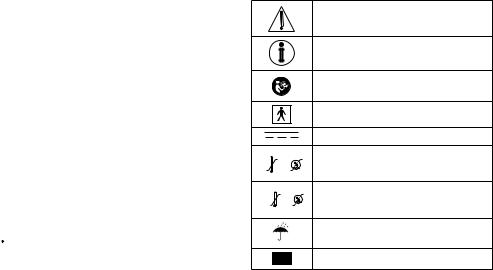
With kind regards, Your Beurer Team
1. Getting to know your instrument
The upper arm blood pressure monitor is used for non-inva- sive measurement and monitoring of adults’ arterial blood pressure. This allows you to quickly and easily measure your blood pressure and to display the last recorded measurement. The values determined are classified and graphically evaluated according to WHO guidelines.
Blood pressure measurements determined by this monitor are equivalent to those obtained by a trained observer using the cuff/stethoscope auscultation method, within the limits prescribed by the U.S. Department of Health and Human Service (World Health Organization; WHO).
It is recommended to check the performance every 5 years or after repair. Please contact customer service.
2. Important information
 Signs and symbols
Signs and symbols
The following symbols are used in these instructions for use, on the packaging and on the type plate for the device and accessories:
Caution
Note
Note on important information
Follow instructions for use
Type BF applied part (cuff only)
|
Direct current |
Storage |
Permissible storage temperature and |
|
humidity |
Operating |
Permissible operating temperature and |
|
|
|
humidity |
|
Keep dry |
SN |
Serial number |
11
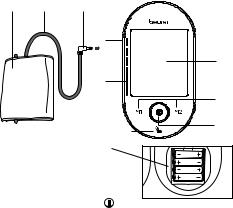
3. Package Contents |
4. Device description |
•Blood Pressure Monitor Model BM 55
•Universal arm cuff 8.7 in - 16.5 in (22 – 42 cm)
• Instruction manual |
1 |
2 |
3 |
|
• Quick Start Guide |
|
|
|
|
• Storage pouch |
|
|
|
|
• 4 x 1.5 V AAA alkaline batteries |
|
|
9 |
|
|
|
|
|
SYS |
|
|
|
|
mmHg |
|
|
|
|
4 |
|
|
|
|
DIA |
|
|
|
|
mmHg |
|
|
|
8 |
|
|
|
|
|
PUL |
|
|
|
|
/min |
|
|
|
|
5 |
|
|
|
7 |
6 |
|
|
|
|
|
|
1. |
Arm Cuff |
10 |
|
|
2. |
Air Tube |
|
|
|
3. |
Air Tube Connector |
|
|
|
4. |
LCD Display |
|
|
|
5. |
Memory buttons M1/M2 |
|
|
|
6. |
START/STOP Button |
|
|
|
7. |
Resting Indicator |
|
|
|
8. |
Risk Category Indicator |
|
|
|
9. |
Air Tube Port |
|
|
|
10. |
Battery Compartment (on backside) |
|
|
12

Icons in the display:
1
11 10




 2 9
2 9 









 3 8
3 8




4
76 5
1.Date / time
2.Systolic pressure
3.Diastolic pressure
4.Pulse rate
5.Pulse symbol 
6.Deflation Indicator 
7.Memory space number/ average value ( ), morning (
), morning ( ), evening (
), evening ( )
)
8.Low Battery Indicator 
9.User memory  /
/ 
10.Risk Category Indicator
11.Irregular Heartbeat Indicator 

5. Getting started
NOTE:
To conserve the batteries, the monitor switches off automatically if you do not press any buttons for 3 minutes.
5.1 Inserting/replacing batteries
•Remove the battery cover from the back of the monitor.
•Clean the battery contacts and
those of the device prior to installation with a soft dry cloth.
• Insert or replace with only four AAA alkaline batteries. Make ab-
solutely sure that you insert them
with the correct polarity (+/-) as indicated (see the diagram inside the battery compartment). Do not use other types of batteries.
• Replace the battery cover carefully.
All display elements are briefly displayed and 12 h flashes in the display. To set the time and date, refer to section ‘5.3 Setting the date and time’
If the battery change icon  is continuously illuminated, measurement is no longer possible and you must replace all the batteries.
is continuously illuminated, measurement is no longer possible and you must replace all the batteries.
13
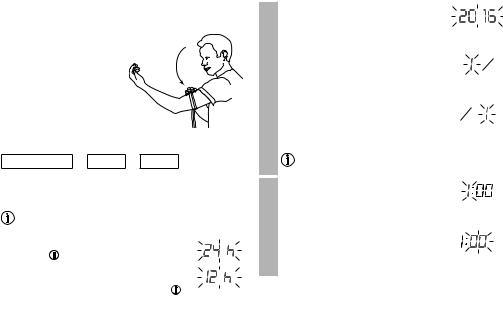
5.2 Cuff selection
This unit includes 1 size of arm cuffs:
• Universal size fits 8.7 in – 16.5 in (22 – 42 cm)
Measure your arm circumference around your bicep using a normal measuring tape.
5.3 Setting the date and time
The following section describes the functions and settings available on the blood pressure monitor.
Hour format Date Time
It is essential to set the correct date and time. Otherwise, you will not be able to save your measured values correctly with a date and time and access them again later.
If you press and hold the M1 or M2 memory button, you can set the values more quickly.
format |
• Press and hold the START/STOP but- |
||
ton for 5 seconds. |
|||
|
• Choose the desired hour format with |
||
Hour |
the M1/M2 memory buttons and con- |
||
firm with the START/STOP button |
|
. |
|
|
|
||
|
|
||
|
|
|
|
Date
Time
The year flashes on the display.
• Choose the desired year using the M1/
M2 memory buttons and confirm with the START/STOP button  .
.
The month flashes on the display.
• Choose the desired month using the M1/M2 memory buttons and confirm
with the START/STOP button  .
.
The day flashes on the display.
• Choose the desired day using the M1/ M2 memory buttons and confirm with
the START/STOP button  .
.
If the hour format is set as 24 h, the day/month display sequence is reversed.
The hours flash on the display.
• Choose the desired hours using the M1/M2 memory buttons and confirm
with the START/STOP button  .
.
The minutes flash on the display.
• Choose the desired minutes using the M1/M2 memory buttons and confirm with the START/STOP button  .
.
14
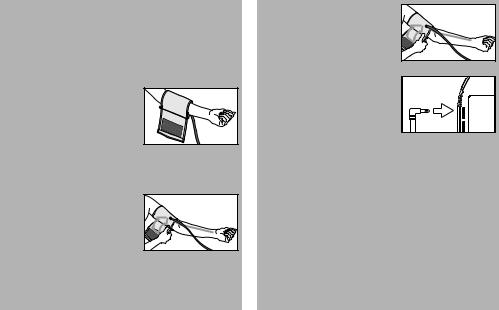
6. Measuring blood pressure
6.1 Positioning cuff
NOTE:
Always properly position the Arm Cuff on the arm at heart level, according to the following instructions.
Fit the cuff round your bare left
upper arm. Do not place the arm
cuff over heavy clothing (e.g. a jacket or sweater sleeve) as the blood pressure monitor will not
be able to take a proper measurement. Blood circulation in the arm should not be restricted by tight clothing or other objects.
The cuff should be placed on the upper arm so that the lower edge is 0.8 in to 1.2 in (2 to 3 cm) above the bend of the elbow and above the artery. The tube should be in line with the centre of the palm.
Now place the free end of the cuff snugly, but not too tightly,
around the arm, and fix it with the
Velcro fastener. The cuff should 


 be fitted tight enough to allow just
be fitted tight enough to allow just  two fingers to fit beneath the cuff.
two fingers to fit beneath the cuff.
Insert the cuff tubing into the socket for the cuff attachment on the left side of the unit. Make sure
it is inserted securely in the main unit and that there are no kinks in
the cuff tubing.
Important: This device should only be operated with the original cuff. The cuff included with the device is suitable for an upper arm circumference of 8.7 to 16.5 in (22 – 42 cm). Replacement cuffs from other models cannot be used with this model. Doing so, will result in inaccurate readings or error messages.
15

•In order not to distort the result, it is important to keep still during the measurement and not talk. The most precise measurement results are obtained if you strive for a relaxed measurement situation. You may close your eyes and breathe calmly during the measurement and don’t cross your legs.
•Please note that any muscle movement during inflation or deflation can cause measurement error.
6.2 General notes
•For reliable monitoring and reference of blood pressure, keeping long-term records is recommended.
•To minimize measurement variations due to physical activity, rest at least 5 minutes before measuring your blood pressure (or 15 minutes after strenuous activity). You should not be physically tired or exhausted while taking measurement.
•In order to obtain a resting condition blood pressure, avoid eating, drinking alcohol and caffeinated beverages, smoking, exercising, and bathing for at least 30 minutes before taking a measurement.
•Stress raises blood pressure.
•Perform measurements in a quiet and relaxed environment at room temperature.
•Always wait at least 5 minutes between measurements to allow the blood circulation in your arm to return to normal. You may need to increase the wait time depending on your individual physiological characteristics. Because of normal physiologic changes and the many external factors influencing blood pressure, it is unusual to obtain identical blood pressure measurements, even when taken a few minutes apart. Speak with your physician to determine what is affecting your blood pressure and which variation may be seen as normal in your case.
16

•The accuracy of any blood pressure measurement with this device can be affected by a multitude of causes. Some can be avoided some have to be accepted at the time of measurement. Speak with your physician about possible causes affecting your blood pressure.
•Do not inflate the cuff unless wrapped around arm.
•If no button is pressed for approx. 3 minutes the automatic shutoff function shuts off the unit in order to preserve the batteries.
•Do not touch the unit, the tube and cuff and/or press any buttons when measurement is in progress, except for stopping the measurement. Doing so may cause incorrect readings.
6.3 Taking measurement
NOTE:
If you are using the unit for the first time, please remove the protective film from the display.
•Put on the cuff around your bare left upper arm as described previously and assume the position in which you want to carry out the measurement.
•Switch on the blood pressure monitor with the START/ STOP button  .
.
•Before the measurement, the last saved test result is briefly displayed. If there is no measurement in the memory, the instrument always displays the value ‘0’.
•The cuff is pumped up. Cuff air pressure is released slowly.
Performing a blood pressure measurement
As described above, attach the cuff and adopt the posture in which you want to perform the measurement.
• To start the blood pressure monitor, press the START/STOP button 
 . All display elements are briefly displayed.
. All display elements are briefly displayed.
Measurement |
The blood pressure monitor will begin |
||||
|
the measurement automatically after 3 |
||||
|
seconds. |
||||
|
The cuff automatically inflates. |
||||
|
|
|
Measuring can be cancelled at any time by press- |
||
|
|
|
ing the START/STOP button |
|
. |
|
|
|
|
||
|
|
|
|
||
The cuff’s air pressure is slowly released. If you already recognize a tendency for high blood pressure, you should reinflate the cuff and increase the cuff’s pressure again. As soon as a pulse is found, the pulse symbol  is displayed.
is displayed.
17
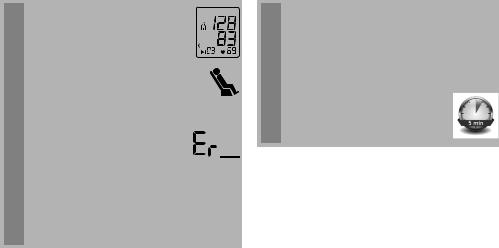
Measurement
• Systolic pressdiastolic pressure and |
8:32 10/29 |
pulse measurements are displayed.
• A symbol at the bottom of the display also lights up to indicate whether you were sufficiently relaxed during the blood pressure measurement (green symbol = sufficiently at rest; red symbol = not at rest).
•Observe the chapter on interpreting results/measuring the resting indicator in these instructions for use.
• appears if the measurement could not be performed properly. Observe the chapter on error messages/troubleshooting in these instructions for use and repeat the measurement.
appears if the measurement could not be performed properly. Observe the chapter on error messages/troubleshooting in these instructions for use and repeat the measurement.
•Now select the desired user memory by pressing
the M1 or M2 memory buttons. If you do not select a user memory, the measurement is stored in the
most recently used user memory. The relevant symbol or
or appears on the display.
appears on the display.
Measurement
•Using the START/STOP button  , switch off the blood pressure monitor. The measurement is then stored in the selected user memory.
, switch off the blood pressure monitor. The measurement is then stored in the selected user memory.
•If you forget to turn off the device, it will switch off automatically after approx. 3 minutes. In this case too, the value is stored in the selected or most recently used user memory.
•Wait at least 5 minutes before taking another measurement!
18
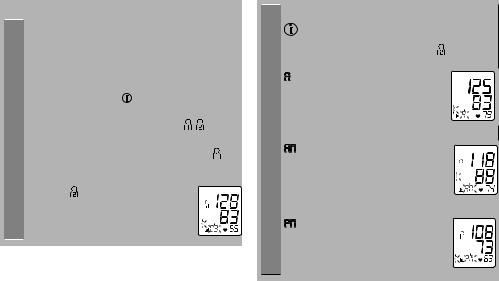
6.4 Displaying and deleting measurements
The results of every successful measurement are stored together with the date and time. If there are more than 60 measurements, the oldest measurements are lost.
• To access memory recall mode, the blood pressure monitor must first be started. To do this press the
memory |
START/STOP button . |
|
|
• Within 3 seconds of the full-screen display appear- |
|||
|
|||
|
ing, select the desired user memory ( |
) with |
|
User |
the M1 or M2 memory button. |
|
|
• To view the measurements for user memory , |
|||
|
press the M1 memory button. |
|
|
|
• To view the measurements for user |
|
|
|
memory , press the M2 memory but- |
8:30 10/29 |
|
|
ton. |
|
|
Your last measurement will appear on the display.
Average values
• Press the relevant memory button (M1 or M2).
If you have selected user memory , the M1 memory button must be pressed.
, the M1 memory button must be pressed.
If you have selected user memory , the M2 memory button must be pressed.
A flashes on the display.
The average value of all saved measured values in this user memory is displayed.
• Press the relevant memory button (M1 or M2).
AM flashes on the display.
The average value of the morning measurements for the last 7 days is displayed (morning: 5.00 a.m. – 9.00 a.m.).
• Press the relevant memory button (M1 or M2).
PM flashes on the display.
The average value of the evening measurements for the last 7 days is displayed (evening: 6.00 p.m. – 8.00 p.m.).
19
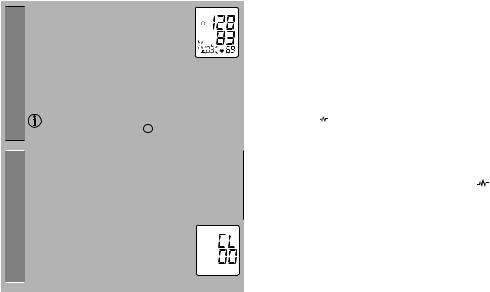
Deleting measured values Individual measured values
• When the relevant memory button (M1 or M2) is pressed again, the last individual measurement is displayed (in this example, measurement 03).
•When the relevant memory button (M1 or M2) is pressed again, you can view your individual measurements.
•To switch the device off again, press the START/ STOP button  or wait 30 sec.
or wait 30 sec.
You can exit the menu at any time by pressing the START/STOP button 
 .
.
•To clear the memory of the relevant user memory, you must first select a user memory.
•Start individual measurement access.
•Press and hold the M1 & M2 memory buttons for 5 seconds.
All the values in the current user memory are deleted.
7. Evaluating results
NOTE:
A single measurement does not provide an accurate indication of your true blood pressure. You need to take and record several readings over a period of time. Try to measure your blood pressure at the same time each day for consistency.
7.1 Irregular heartbeat symbol
This symbol  indicates that certain heartbeat/pulse irregularities were detected during the measurement.
indicates that certain heartbeat/pulse irregularities were detected during the measurement.
NOTE:
•Talking, moving, shaking or an irregular pulse during the measurement can result in the appearance of this symbol.
•Repeat the measurement if the flashing icon 
 is displayed after the measurement. Please note that you should rest at least 5 minutes between measurements and not talk or move during the measurement. If the icon continues to be displayed in subsequent readings, we recommend you to consult your physician in order to determine if it is cause for concern. Do not try to interpret readings or attempt to treat any condition yourself. Always follow the guidance of a health professional. If you have an emergency call 911 immediately.
is displayed after the measurement. Please note that you should rest at least 5 minutes between measurements and not talk or move during the measurement. If the icon continues to be displayed in subsequent readings, we recommend you to consult your physician in order to determine if it is cause for concern. Do not try to interpret readings or attempt to treat any condition yourself. Always follow the guidance of a health professional. If you have an emergency call 911 immediately.
20
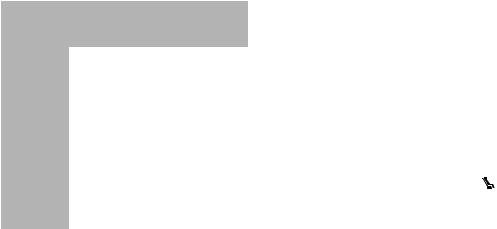
7.2 World Health Organization (WHO) classification
According to WHO Guidelines/Definitions and the latest findings, the test results of adults can be classified and evaluated according to the following chart.
Blood pres- |
Systole |
Diastole |
|
|
sure value |
Action |
|||
(in mmHg) |
(in mmHg) |
|||
category |
|
|
|
|
Setting 3: |
|
|
seek medical |
|
severe |
≥ 180 |
≥ 110 |
||
attention |
||||
hypertension |
|
|
||
|
|
|
||
Setting 2: |
|
|
seek medical |
|
moderate |
160 – 179 |
100 – 109 |
||
attention |
||||
hypertension |
|
|
||
|
|
|
||
Setting 1: |
|
|
regular monitor- |
|
mild |
140 – 159 |
90 – 99 |
||
ing by doctor |
||||
hypertension |
|
|
||
|
|
|
||
High normal |
130 – 139 |
85 – 89 |
regular monitor- |
|
ing by doctor |
||||
|
|
|
||
Normal |
120 – 129 |
80 – 84 |
self- |
|
monitoring |
||||
|
|
|
||
Optimal |
< 120 |
< 80 |
self- |
|
monitoring |
||||
|
|
|
Source: U.S. Department of Health and Human Service, WHO7 (2004), adapted
Measuring the resting indicator (using the HSD diagnosis)
The most frequent error made when measuring blood pressure is taking the measurement when not at rest (haemodynamic stability), which means that both the systolic and the diastolic blood pressures are distorted.
While measuring the blood pressure, the device automatically determines whether you are at rest or not.
If there is no indication that your circulatory system is not
sufficiently at rest, the symbol
 (haemodynamic stability) lights up green and the measurement can be recorded as a reliable resting blood pressure value.
(haemodynamic stability) lights up green and the measurement can be recorded as a reliable resting blood pressure value.
 GREEN: haemodynamically stable
GREEN: haemodynamically stable
Measurement of the systolic and diastolic pressure is increased when the circulatory system is sufficiently at rest and is a very reliable indicator of resting blood pressure.
However, if there is an indication that the circulatory system is not sufficiently at rest (haemodynamic instability), the symbol lights up red.
In this case, the measurement should be repeated after a period of physical and mental rest. The blood pressure
measurement must be taken when the patient is physically
21
and mentally rested, as it will be the basis for a diagnosis and regulation of the patient’s medical treatment.
 RED: lack of haemodynamic stability
RED: lack of haemodynamic stability
It is very probable that the systolic and diastolic blood pressures have not been measured whilst the patient is at rest and the resting blood pressure measurement has therefore been distorted.
Repeat the measurement after a rest and relaxation period of at least five minutes. Go to a sufficiently quiet and comfortable spot and remain there calmly; close your eyes, breathe deeply and evenly and try to relax.
If the next measurement also shows insufficient stability, you can repeat the measurement after another resting
period. If the measurements continue to show some instability, identify these blood pressure measurements as having been taken when the circulatory system had not been sufficiently rested.
In this case, nervousness or inner anxiety may be the cause and this cannot be cured by brief periods of rest. Existing cardiac arrhythmias may also prevent a stable blood pressure measurement.
A lack of resting blood pressure can have various causes, such as physical or mental strain or distraction, speaking or experiencing cardiac arrhythmias during the blood pressure measurement.
In an overwhelming number of cases, the HSD diagnosis will give a very good guide as to whether the circula-
tory system is rested when taking the measurement. Certain patients suffering from cardiac arrhythmia or chronic mental conditions can remain haemodynamically unstable in the long-term, something which persists even after repeated periods of rest. The accuracy of the resting blood pressure results is reduced in these users. Like any medical measurement method, the precision of the HSD diagnosis is limited and can lead to incorrect results in some cases. The blood pressure measurements taken when the circulatory system was at rest represent particularly reliable results.
NOTE:
This standard, however, is a general guideline as an individual’s blood pressure varies among different people, age groups, etc. Please consult your physician for proper diagnosis.
The bar graph in the display and the scale on the unit indicate the range of the blood pressure which has been recorded.
NOTE:
If the values for systolic and diastolic pressure are in two different WHO ranges (e.g. systolic in the pre-hypertension range and diastolic pressure in the normal range) the graphic WHO classification on the unit indicates the higher range (pre-hypertension in the example described).
22

8. Care, maintenance and disposal
NOTE:
Further documents which include information for the Calibration of the device can be asked at the service address. The device can be tested in case of supposed inaccuracy every two years. Please contact the nearest service address.
To keep your blood pressure monitor in the best condition and protect the unit from damage follow the directions listed below:
•When storing the device, make sure that no heavy objects are placed on top of it.
•Do not fold the cuff and tubing tightly. The cuff tube should not have any sharp kinks and keep it away from sharp edges.
•If the unit is stored near freezing, allow it to acclimate to room temperature before use.
•Always store the unit in its storage bag after use.
•This unit may not meet its performance specifications if stored or used outside of the temperature and humidity ranges (see section ‘10. Technical Specifications’).
•No component of this blood pressure monitor can be maintained by the user. Circuit diagrams, component part lists, descriptions, calibration instructions, or other information, that will assist qualified service personnel to repair parts that are designated as repairable, are available on request.
•Avoid storing the unit in high temperatures and direct sunlight.
•To clean, moisten a soft cloth with Ethyl alcohol (75-90%), squeeze it and wipe the inner side of the cuff (the side touching the skin). Then allow the cuff to air dry.
•It is recommended to clean the cuff after the usage of every 200 times.
•The cuff integrity is maintained after 1,000 open–close cycles of the closure.
•Use the unit consistent with the instruction provided in this manual.
Disposal:
Observe the local regulations for material disposal. Dispose of the device in accordance with local regulations. If you have any questions, please contact the local authorities responsible for waste disposal.
9. Error messages/troubleshooting
•In the event of errors, the error message  _ appears on the display.
_ appears on the display.
Error messages may appear if:
•systolic or diastolic pressure could not be measured  or
or appears on the display),
appears on the display),
•systolic or diastolic pressure was outside the measurement range ( or LO appears on the display),
or LO appears on the display),
23

•the cuff is fastened too tightly or loosely  or
or appears on the display),
appears on the display),
•the pump pressure is higher than 300 mmHg ( appears on the display),
appears on the display),
•pumping up takes longer than 160 seconds or pressure is higher than 15 mmHG  appears on the display),
appears on the display),
•there is a system or device error  ,
,  ,
,  or
or  appears on the display),
appears on the display),
•the batteries are almost empty  .
.
In such cases, repeat the measurement. Ensure that you do not move or speak.
If necessary, reinsert or replace the batteries.
 Technical alarm – description
Technical alarm – description
Should the recorded blood pressure (systolic or diastolic) lie outside the limits specified in the section ‘10. Technical Specifications’, the technical alarm will appear on the display indicating either ‘ ‘ or ‘LO‘. In such cases, you should seek medical assistance and check the accuracy of your procedure.
‘ or ‘LO‘. In such cases, you should seek medical assistance and check the accuracy of your procedure.
The limit values for the technical alarm are factory set and cannot be adjusted or deactivated. These alarm limit values are accorded second priority under the standard IEC 60601-1-8.
The technical alarm is a non-locking alarm and must not be reset. The signal shown on the display will disappear automatically after about 8 seconds.
NOTE:
If the unit still does not work, contact customer service at 1-800-536-0366.
10. Technical Specifications
Type |
BM 55 |
Measurement |
Oscillometric, non-invasive blood |
method |
pressure measurement on the up- |
|
per arm |
Measurement range |
Cuff pressure 0-300 mmHg, |
|
systolic 60-260 mmHg, |
|
diastolic 40-199 mmHg, |
|
Pulse 40-180 beats/minute |
Display accuracy |
Systolic ± 3 mmHg, |
|
diastolic ± 3 mmHg, |
|
pulse ± 5 % of the value shown |
Measurement |
Max. permissible standard devia- |
inaccuracy |
tion according to clinical testing: |
|
systolic 8 mmHg /diastolic 8 mmHg |
Memory |
2x60 memory spaces |
24

Dimensions |
7.3 in (L) x 3.7 in (W) x 2.2 in (H) |
||||||||
|
(186 x 95 x 56 mm) |
||||||||
Weight |
Approximately 11.1 oz (316 g) |
||||||||
|
(without batteries and cuff) |
||||||||
Cuff size |
8.7 in – 16.5 in (22 – 42 cm) |
||||||||
Permissible operat- |
+50 °F to +104 °F (+10 °C to +40 °C), |
||||||||
ing conditions |
0% ≤ 90% relative air humidity |
||||||||
|
(non-condensing) |
||||||||
Permissible storage |
-4 °F to +131°F (-20 °C to +55 °C), |
||||||||
conditions |
≤ 90 % relative air humidity, |
||||||||
|
800-1050 hPa ambient pressure |
||||||||
Power supply |
4 x 1.5 V |
|
|
|
|
|
|
|
AAA batteries |
|
|
|
|
|
|||||
|
|
|
|
|
|
|
|||
Battery life |
For approx. 100 measurements, |
||||||||
|
depending on the blood pressure |
||||||||
|
level and/or pump pressure |
||||||||
Accessories |
Instruction for use, 4 x 1.5V AAA al- |
||||||||
|
kaline batteries, storage pouch |
||||||||
Classification |
Internal supply, IPX0, no AP or |
||||||||
|
APG, continuous operation, type |
||||||||
|
BF applied part |
|
|||||||
Key to symbols |
WARNING! Read the safety |
||
|
information and all instruc- |
||
|
tions to avoid serious injury. |
||
|
application part Type BF |
|
|
|
|
|
|
Auto-shut-off |
approx. 3 minutes after last button |
||
|
operation |
||
These specifications are subject to change without notice for purpose of improvement.
The serial number can be found on the unit itself or in the battery compartment.
•This unit is in line with European Standard EN60601-1-2 and is subject to particular precautions with regard to electromagnetic compatibility (EMC). Please note that portable and mobile HF communication systems may interfere with this instrument. For more details, please contact customer service at the address indicated.
•The instrument is in line with the EU Medical Products Directive 93/42/EC, the German medical products act and European standards EN1060-1 (non-invasive Blood Pressure Monitors, Part 1: general requirements) and EN1060-3 (non-invasive Blood Pressure Monitors, Part 3: Supplementary Requirements for Electromechanical Blood Pressure Measurement Systems).
25
11. FCC Compliance Statement
Changes or modifications to the product not expressly approved by the party responsible for compliance could void the user’s authority to operate the equipment.
NOTE:
This equipment has been tested and found to comply with the limits for a Class B digital device, pursuant to Part 15 of the FCC Rules. These limits are designed to provide reasonable protection against harmful interference in a residential installation. This equipment generates, uses and can radiate radio frequency energy and, if not installed and used in accordance with the instructions, may cause harmful interference to radio communications. However, there is no guarantee that interference will not occur in a particular installation. If this equipment does cause harmful interference to radio or television reception, which can be determined by turning the equipment off and on, the user is encouraged to try to correct the interference by one or more of the following measures:
•Reorient or relocate the receiving antenna.
•Increase the separation between the equipment and receiver.
•Connect the equipment into an outlet on a circuit different from that to which the receiver is connected.
•Consult the dealer or an experienced radio/TV technician for help.
12. Warranty
Limited Lifetime Warranty For Original Purchaser
Your Beurer Blood Pressure Monitor, Model BM 55, excluding cuff (incl. tube), batteries and any optional accessory, is warranted to be free from defects in materials and workmanship for the life of the product under normal conditions of intended use and service. The cuff is warranted to be free from defects in materials and workmanship appearing within two years from date of purchase when the monitor is used in accordance with the instructions provided with the unit. This warranty extends only to the original retail purchaser and does not extend to retailers or subsequent owners.
We will, at our option, repair or replace the Beurer Blood Pressure Monitor, Model BM 55, without additional charge, for any part or parts covered by these written warranties. No refunds will be given. Repair or replacement is our only responsibility and your only remedy under this written warranty. If replacement parts for defective materials are not available, Beurer reserves the right to make product substitutions in lieu of repair or replacement.
For warranty service contact our customer service department at 1-800-536-0366 or at info@beurer.com to provide a description of the problem. If the problem is deemed to be within the scope of the limited lifetime warranty, you will be asked to mail the product at your costs in its original package with proof of purchase, your name, address and
Subject to error and change
26
phone number. If the problem is not deemed to be within the scope of the limited lifetime warranty, we will provide a quotation for repair, respectively, replacement and return shipping fees.
This warranty does not cover damage caused by misuse or abuse; accident; the attachment of unauthorized accessories; alteration to the product; improper installation; misapplication; lack of reasonable care with respect to the product; unauthorized repairs or modifications; improper use of electrical/power supply; old worn batteries; normal wear; loss
of power; dropped product; malfunction or damage of an operating part as a result of failure to comply with instructions for use or to provide manufacturer’s recommended maintenance; transit damage; theft; neglect; vandalism; or environmental conditions; loss of use during the period the product is at a repair facility or otherwise awaiting parts or repair; or any other conditions whatsoever that are beyond the control of Beurer. This warranty is void if the product is ever used in a commercial or business environment. The maximum liability of Beurer under this warranty is limited to the purchase price actually paid by the customer for the product covered by the warranty, as confirmed by proof of purchase, regardless of the amount of any other direct or indirect damage suffered by the customer.
This warranty is effective only if the product is purchased and operated in the country in which the product is pur
chased. A product that requires modifications or adoption to enable it to operate in any other country than the country for which it was designed, manufactured, approved and/or authorized, or repair of products damaged by these modifications is not covered under this warranty.
THE WARRANTY PROVIDED HEREIN SHALL BE THE SOLE AND EXCLUSIVE WARRANTY. ANY IMPLIED WARRANTIES, OBLIGATIONS, OR LIABILITES, INCLUDING BUT NOT LIMITED TO THE IMPLIED WARRANTY OF MERCHANTABILITY AND FITNESS FOR A PARTICULAR PURPOSE, ARE LIMITED IN DURATION TO THE DURATION OF THIS APPLICABLE WRITTEN WARRANTY.
Some states do not allow limitations on how long an implied warranty lasts, so the above limitations may not apply to you.
IN NO EVENT SHALL BEURER BE LIABLE FOR ANY SPECIAL, INCIDENTAL, INDIRECT OR CONSEQUENTIAL DAMAGES FOR BREACH OF THIS OR ANY OTHER WARRANTY, EXPRESS, IMPLIED OR ANY OTHER THEORY OF LIABILITY, WHATSOEVER. Some states do not allow the exclusion or limitation of special, incidental, or consequential damages, so the above limitation may not apply to you.
Beurer does not authorize anyone, including, but not limited to, retailers, the subsequent consumer purchaser of
27
